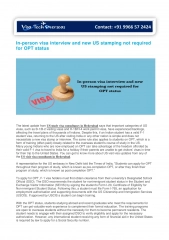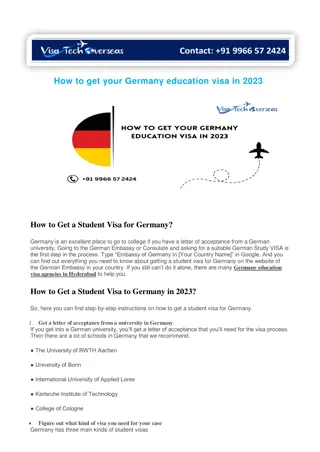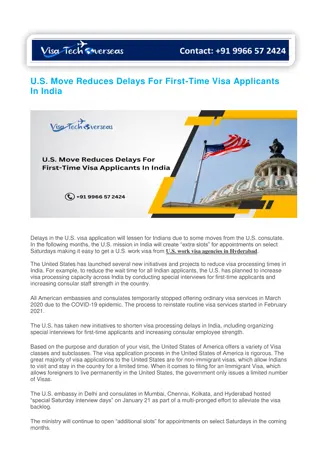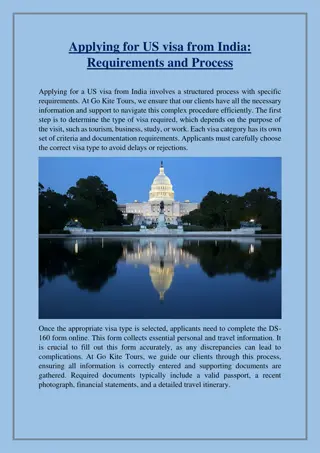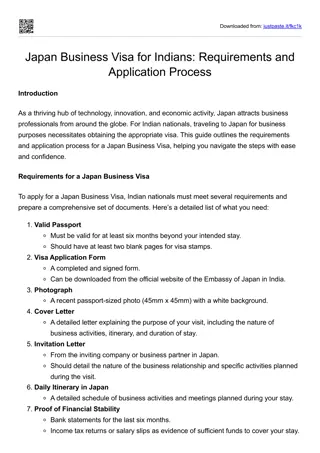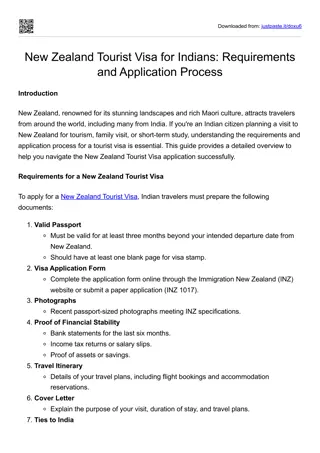Exploring the i-VISA Model for Technology Leadership in Smarter School Development
Dr. Chang, I-Hua, Chairperson of Taiwan Technology Leadership and Instructional Technology Development Association, introduces the i-VISA Model, consisting of Interpersonal and communication skills, Vision, planning and management, Infrastructure and technology support, Staff development and training, and Assessment, Evaluation, and Research. These dimensions highlight the key elements essential for school leaders in driving smarter school development, focusing on mentorship, goal alignment, resource coordination, professional development of teachers, and assessment processes to enhance technology integration effectively.
Download Presentation

Please find below an Image/Link to download the presentation.
The content on the website is provided AS IS for your information and personal use only. It may not be sold, licensed, or shared on other websites without obtaining consent from the author. Download presentation by click this link. If you encounter any issues during the download, it is possible that the publisher has removed the file from their server.
E N D
Presentation Transcript
A study of Dr. Chang, I-Hua, Chairperson of Taiwan Technology Leadership and Instructional Technology Development Association suggests that there are five dimentions of technology leadership in school, which he calls i-VISA Model . The following presentations cites the i-VISA model to explain the key elements of a school leader during the progress of the smarter school development
What is i-VISA? i: Interpersonal and communication skills A leader shall be the mentor and motivator in a smarter school. During the development processes of a smarter school development, the whole school must reach a consensus and have the same goal by a leader. Through the cooperation among the administrative teams and teachers, the goal can be achieved. During the cooperation, conflicts are unavoidable; obstacles and setbacks may also occur during the implementation. The leader shall be a motivator at these moments to help the organization and the project run smoothly. V: Vision, planning and management A leader shall be the Captain for direction, Leader for trends, and Founder of project; these are the essential tasks of a leader in a smarter school development. There are many aspects of smarter education. A leader shall weight on internal and external factors of an organization, establish the vision of smart school development, urge the formation of related projects, and implement the leading plan, until harvesting the results in final stage and implement on each stage again.
What is i-VISA? I: Infrastructure and technology support A leader in a smarter school shall be a Coordinator of resources. As the leader of a smarter school, he/she not only coordinates the resources inside the school, but also work for external resources to speed up the development of the smarter school. S: Staff development and training The core of smarter school development is the innovation of classrooms. Except of building technical equipment actively, it is more important for the school leaders to support the professional development of teachers. Other than providing the necessary time, curriculums and budgets for teachers to develop professionally, the system and culture of the continuous professional development for teachers are important to be built.
What is i-VISA? A: Assessment, Evaluation, and Research The assessment, evaluation, and research can be originated from school, or made by external organizations. There may be several dimensions of the evaluation for a smarter school: assess the managing leve and outcomes in applying technology effectively of the faculty; assess the outcome of implementing technology from the view of cost-effectiveness; assess the related projects of the school; or assess the application of technology in teaching by referring the experiences of other schools in the same districts. The applied systems in the classrooms can be assessed as well.
Why Why i i- -VISA ? VISA ? Love is most powerful (pronounciation of i-VISA in Chinese): The Technology Leadership i-VISA model, is a formula of success based on Love is most powerful in Education. Love is most powerful (i-VISA) means the technology vision and plan with the great love for education, the innovative achievement to communicate with the faculty and establishment of technical infrastructures, and the progressing teachers professional development as well as learning outcomes of students.
The model schools using i-VISA Worldwde (The technology model schools using i-VISA in the U.S.) Leading Technology-Rich Schools: Award-Winning Models for Success Levin and Schrum (2012) studied eight high schools in the U.S., (Walton Middle school, Rose Hill Junior School,Godfrey-Lee Public Schools, Simley High School, Chesapeake High School,Mooresville High School, STEM Academy, Tech High School), and suggested nine key elements essential to the school leaders in the schools and school zones that successfully improved the school with technology
The technology model schools using The technology model schools using i i- -VISA in the U.S. in the U.S. 1. Having clear vision, mission, and goals; 2. Enacting distributed leadership practices; 3. Planning, planning, and more planning; 4. Figuring out funding sources for technology; 5. Technology infrastructure and support; 6. Providing ongoing professional development; 7. Attending to school culture; 8. Changing curriculum and instruction; 9. Collaborations and partnerships. VISA
Review the Technology Leadership of Principals with i-VISA model: Case Study From Four Schools in China and Taiwan
iinterpersonal communication skills Table 1: The Achievements in Interpersonal Communication Skills of four model schools in China and Taiwan Beixin Elementary School Dayu Junior High School 1. Meetings with the administrative directors 2. Academic meetings with the faculty 4. Monthly commission meeting with PTA 3. Meetings with the officers of the student council 5. Access to government officials through events 1. Long-term development of the internal atmosphere 2. Establishment of external relationships 3. Chances of interactions in unofficial events Shanghang First School Experiement Junior High School, Shandong Province 1. Training to all students 2. External communications between the administrative personnel and the faculty 3. Internal communications among teachers 4. Promotion of class reform and teaching models to parents. 1. Answers to parents questions and promotion of the family education 2. Communication with students from time to time 3. Teachers are hired by the school but under the supervision of the county government
Representative School: Beixin Elementary School 1. Convenient access for contacting 2. Contact through events Governme ntal Officials 1. Subject meetings (Four times a year) 2. Community meetings 1. Supervisor meetings (weekly) 2. Other administrative meetings (monthly) Teachers Administr ative Personnel And Volunteers 1. Monthly general council meeting of PTA 2. General council meetings at the beginning and end of semesters 1. Officers of student council 2. Student council meeting 3. Manifesto of the student council Parents Students
V: Vision, planning and management Table 2: The Achievements in Vision, Planning and Management of four model schools in China and Taiwan Beixin Elementary School Dayu Junior High School 1. The era context for technologies fusing to schools 2. Ideas of the Smart School SMART Project 1. Four Givings: Giving resources, giving stage, giving applause, giving comfort 2. Innovative Development System for Teachers: Mountain Climbing Project Shanghang First School Experiement Junior High School, Shandong Province 1. Promoting the Smart School with three steps 2. Stage achievement every three years 3. Expansion toward neighborhood to form a Smart School Zone 1. Be a leader in the smart education 2. Create the atmosphere for happy learning 3. Promote the smart education to develop steadily
Representative School: Shandong Experimental Junior High School (1) Enhance the informatization environment in school further; (2) Establish the education informatization platform for public services ; (3) Speed up the construction of the smart school, and optimize the management models of school; (4) Build up a team of informatization talents; (5) Establish a electronic reading room in library; (6) Actively promote the application of education Big Data (7) Lead the school curriculum resources development with education informatization; (8) Promote the internationalization of school education with education informatization; (9) Lead the integral development of the school zone with informatization construction; (10) Enhance researches to drive the scientific development of education informatization. Promote the smart education to develop steadily
I: Infrastructure and technology support Table 3: The Achievements in Infrastructure and technology support of four model schools in China and Taiwan 1. Budget resources for school construction 2. Smart classroom construction 3. Facility Management 1. Make the wireless internet environment for the whole school as the first priority 2. Smart classroom for each class, to improve the accessibility for teachers and students 3. Three-tier supporting system to address the difficulties to teachers 1. Construction of hardware 2. Construction of software 3. Status of facility utilization 2. Speed of facility construction 3. Use and effects of the electronics book bags 4. Gradual perfection of the data system
Representative School: Shanghang First High School 1. Construction of hardware 2. Construction of software (1) Status of class facility construction (1) System of student management (2) Budget source for facility construction (2) Assessment system for student comprehensive quality (3) Speed of facility construction (3) Attendance system of teachers (4) Quantity of tabs allocated to students (4) Performance archive system of teachers
S: Staff development and training Table 4: The Achievements in Staff development and training of four model schools in China and Taiwan 1. Teachers may choose the stage he/she prefers at will 2. Internal training in school 3. External communications 1. The professional learning community of teachers is the core 2. Innovative professional development of teachers 3. Material and non material awarding system 4. Development of seed teachers 2. Structure the learning community of teachers 3. School-based training 1. Training to teachers 2. Training to students
Representative School: Dayu Junior High School The company of bellwether: the principal encourages, provides, participates, and accompany the training. Sandwich-style Research and Learning Project: 1. Planning the research and learning, grasping the philosophy and learning skills. 2. Teaching in person, recording the reviews, and deepening the skills 3. Recurrent education, clarification of philosophy, enhancement of self-confidence. Learning Sharing Practicing Presenting: the continuous cycle to accept the smart classroom teaching model.
A: Assessment, Evaluation, and research Table 4: The Achievements in Assessment, Evaluation, and research of four model schools in China and Taiwan 1. Project Assessment 2. System Assessment 3. Performance Assessment 1. Teacher Assessment 2. Student Assessment 1. Review the application of classroom models of a teacher 2. Review the facility utilization of a teacher 3. Develop a well-rounded awarding mechanism 1. Assessment to school 2. Assessment to teachers 3. Assessment to students
Representative School: Shanghang First High School (1) Review the application of classroom models of a teacher through qualification class (2) Review the facility utilization of a teacher through optimal class 1. Review the classroom of a teacher Status of model Application (3) The curriculum preparation group opens class for inspection (4) Administrative officials listen to classes randomly
Representative School: Shanghang First High School (1) not mandatory to senior teachers, and respect their wills more (2) every young and mid-aged teacher is required to pass the qualification inspection 2. Review Teachers facility utilization (3) The qualification inspection in the teaching research group (4) Sample the teachers for inspection
Representative School: Shanghang First High School (1) Establish a fund to award teaching and learning (2) Raise the performance compensation 3. Develop a well-rounded awarding mechanism (3) Awards for competition of teaching outcomes
Myths met in the practice of i-VISAmodel in school? 1. School misunderstands the assessment and research as Assessment of Professional Development for Teachers, and think the assessment is the evaluation to the teaching performance to teachers, in order to promote the reflections of teachers and evaluate the teaching performance. 2.School misunderstands the assessment and research as Assessment of School Affairs, and the assessment becomes the measure to review the performance of a school. 3. Some schools think the technology leadership may raise the concerns of parents regarding the learning performance of students. 4. Most of schools divide the assessments to internal and external, and emphasizing the internal assessment in the schools over the participation of external assessment. 5. Some schools make fewer efforts regarding assessment and research, and this need to be improved.
Myths met in the practice of i-VISAmodel in school? According to the explanation of ISTE regarding assessment and evaluation, as the following: (Williamson & Redish, 2009, p.6): Educational technology leaders communicate research on the use of technology to implement effective assessment and evaluation strategies.
Williamson and Redish (2009) indicate that the technology leadership standards for assessment and evaluation including the following (p.90): 1. Apply technology in assessing student learning of subject matter using variety of assessment techniques. 1-1 Facilitate the development of a variety of techniques to use technology to assess student learning of subject matter. 1-2 Provide technology resource for assessment and evaluation of artifacts and data.
2. Use technology resources to collect and analyze data, interpret results, and communicate findings to improve instructional practice and maximize student learning. 2-1 Identify and procure technology resources to aid in analysis and interpretation of data.
3. Apply multiple methods of evaluation to determine students appropriate use of technology resources for learning, communication, and productivity. 3-1 Design strategies and methods for evaluating the effectiveness of technology resources for learning, communication, and productivity. 3-2 Conduct a research project that includes evaluating the use of a specific technology in a PK-12 environment. Reference: Williamson, J., & Redish, T. (2009). ISTE s technology facilitation and leadership standards. Washington, DC: International Society for Technology in Education.










